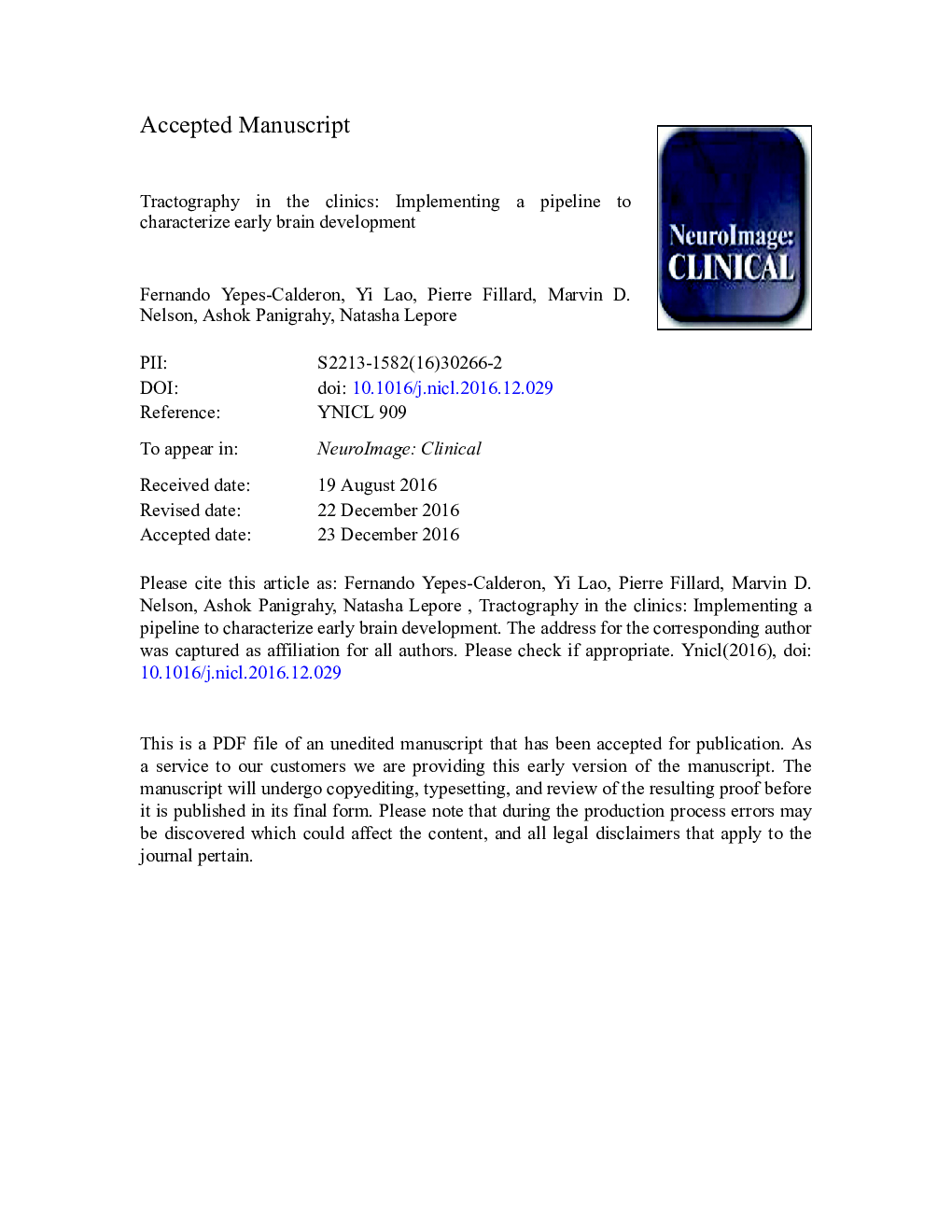| Article ID | Journal | Published Year | Pages | File Type |
|---|---|---|---|---|
| 8688773 | NeuroImage: Clinical | 2017 | 33 Pages |
Abstract
In imaging studies of neonates, particularly in the clinical setting, diffusion tensor imaging-based tractography is typically unreliable due to the use of fast acquisition protocols that yield low resolution and signal-to-noise ratio (SNR). These image acquisition protocols are implemented with the aim of reducing motion artifacts that may be produced by the movement of the neonate's head during the scanning session. Furthermore, axons are not yet fully myelinated in these subjects. As a result, the water molecules' movements are not as constrained as in older brains, making it even harder to define structure using diffusion profiles. Here, we introduce a post-processing method that overcomes the difficulties described above, allowing the determination of reliable tracts in newborns. We tested our method using neonatal data and successfully extracted some of the limbic, association and commissural fibers, all of which are typically difficult to obtain by direct tractography. Geometrical and diffusion based features of the tracts are then utilized to compare premature babies to term babies. Our results quantify the maturation of white matter fiber tracts in neonates.
Related Topics
Life Sciences
Neuroscience
Biological Psychiatry
Authors
Fernando Yepes-Calderon, Yi Lao, Pierre Fillard, Marvin D. Nelson, Ashok Panigrahy, Natasha Lepore,
